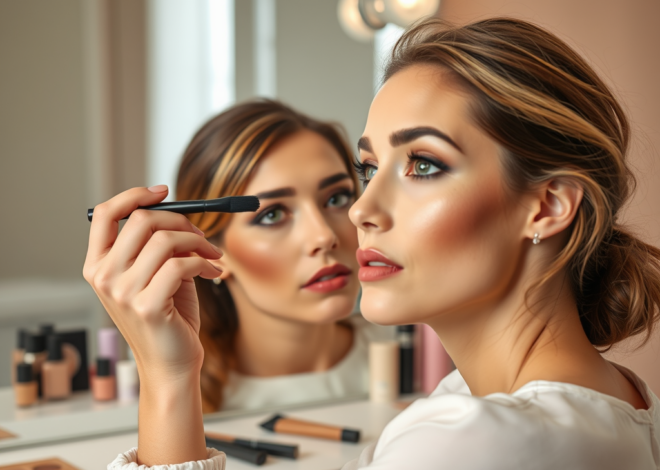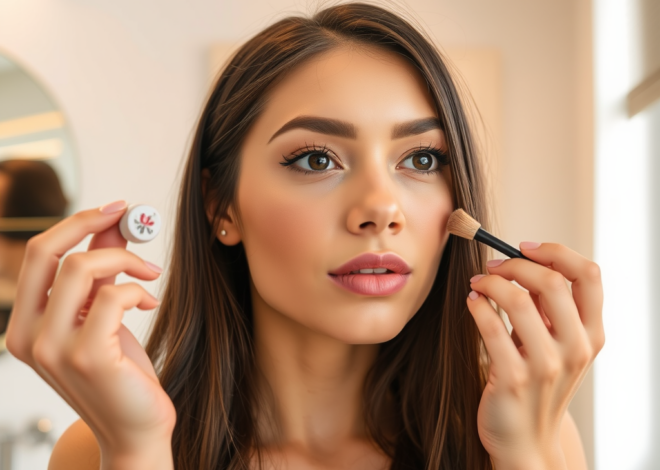
How to repair damaged nails from gel
Understanding the Damage Caused by Gel Nails
What Gel Nails Can Do to Your Natural Nails
The charm of a gel manicure lies in its ability to maintain a flawless appearance that lasts for weeks without chipping, akin to the perfect application of liquid eyeliners that stays put all day. However, frequent use of gel formulas can lead to a number of issues. The rigid coating restricts natural nail movement, leading to brittleness. The removal process, if done improperly, can strip away layers of the nail plate, much like how harsh makeup remover might affect delicate lash lines.
Recognizing Signs of Damage
Knowing how to spot damage early can be as crucial as choosing the right eye makeup for different eye shapes—prevention is preferable to correction. Common indicators of nail damage post-gel include:
- White spots or patches
- Surface ridges and pits
- Increased fragility and splitting
Detecting these signs early can help you start a nail care protocol sooner, which often leads to a more successful recovery process.

Prevention Strategies
Tips Before Applying Gel Polish
Before you consider dipping your nails into the world of gel, pre-emptive steps are as necessary as the prep work before donning liquid liners for that impeccable cat eye. Here are some measures to keep your nails healthy:
- Hydrate your nails and cuticles regularly with oils or creams.
- Choose an experienced technician who avoids using damaging tools or techniques on the nail bed.
- Opt for an LED light rather than UV to cure the polish, which can be less harsh on the skin and nails.
Maintaining Healthy Nails with Gel Manicures
Maintaining the health of your nails even while indulging in gel manicures isn’t unlike maintaining the precision of pencil liners in your makeup routine; both require regular attention and care. This includes giving nails a break between gel applications to prevent weakening and being gentle when typing or using your nails to prevent mechanical damage.
Immediate Steps to Take After Noticing Damage
Safely Removing Gel Polish
Once damage is evident, the first and most important task is to remove the gel polish without causing further harm. Soak-off methods are preferred, as they gently dissolve the bond between the gel and the nail, echoing the gentle removal of gel eyeliners along the delicate lash lines. It’s integral to avoid picking or peeling the gel off, which can exacerbate the nail damage significantly.
Nail Care Post-Removal
After safely removing the gel polish, nail care is paramount. Here’s a step-by-step post-gel-care regimen:
- Gently buff the nail to smooth out any ridges, taking care not to thin out the nail plate.
- Apply a hydrating cuticle oil to nurture the nail bed and promote healthy growth.

Long-term Nail Repair and Care
Strengthening Treatments for Your Nails
Post-recovery involves not just immediate treatments but also long-term strategies to ensure that nails remain strong and resilient. Look for fortifying nail treatments that contain ingredients like biotin, keratin, or vitamin E, which can help reinforce nail structure, akin to how a primer works beneath makeup looks to enhance and protect the skin. Additionally, using a nail hardener can provide an extra layer of protection, much like gel liners establish bold statements that protect the intricate work of eye makeup from smudging. Apply these treatments as directed, often once a week, to help rebuild the strength of your natural nails over time.
| Treatment | Description |
|---|---|
| Nail Hardener | A nail hardener is a type of clear polish that contains ingredients to strengthen and harden nails. It can help repair damage and prevent further breakage. |
| Hydrating Nail Treatment | Hydrating nail treatments contain moisturizing ingredients like oils and vitamins to nourish and hydrate the nails, helping to repair damage and prevent brittleness. |
| Protein-Based Nail Treatment | Protein-based nail treatments help strengthen the nails by providing essential proteins that can repair damage and promote healthy nail growth. |
| Cuticle Oil | Cuticle oil helps nourish the nails and surrounding skin, keeping them hydrated and healthy. It can also improve the appearance of damaged nails by promoting growth and strength. |
| Regular Moisturizing | Keeping the nails and surrounding skin moisturized is essential for overall nail health. Regularly applying hand and nail cream can help prevent and repair damage caused by gel manicures. |
Dietary Considerations for Nail Health
A holistic approach towards nail health includes considering dietary factors that contribute to nail strength. Incorporating foods rich in protein, omega-3 fatty acids, iron, calcium, and vitamins can aid in nail repair. Think of nourishing your nails from the inside out the same way that hydrating serums feed the skin’s deeper layers beneath the makeup. This list includes:
- Lean meats or plant-based proteins such as lentils and chickpeas.
- Foods high in biotin, like eggs, almonds, and sweet potatoes.
- Plenty of leafy greens for iron and calcium, critical for nail fortitude.
Professional Help and When to Seek It
Consulting a Nail Technician or Dermatologist
When you are struggling to repair nail damage, it might be time to consult professionals. Just as you might seek out a makeup artist to master the art of liquid eyeliners for different eye shapes, a skilled nail technician can offer advice tailored to your unique situation. In cases of severe damage or if nails do not improve, consulting a dermatologist is crucial since underlying health issues might be contributing to the problem.
Advanced Treatments for Severe Nail Damage
For substantial nail damage that does not improve with at-home care, professional treatments are available. These could range from specialized nail masks and serums to medical-grade ointments that a dermatologist can prescribe. These treatments often have higher concentrations of active ingredients designed specifically for nail rehabilitation, much like the high-pigment payoff of professional makeup compares to everyday cosmetic items.

Conclusion
Recovering from nail damage induced by gel manicures can be demanding, but with the right approach, you can achieve healthy, strong nails once again. It is essential to initiate care promptly after removal of gel polish and to implement an ongoing regimen that fortifies and nourishes the nail. Remember that preventive measures are as vital as the treatments themselves, and consulting professionals when necessary can set you on the right path. Much like crafting a makeup routine that accommodates your features and skin type, repairing gel-damaged nails takes patience, personalization, and commitment to the process.
FAQs
Q1: How long does it typically take for nails to recover after gel polish damage?
A1: Recovery time can vary depending on the extent of the damage and the individual’s nail growth cycle, but generally, nails may take several months to completely recover.
Q2: Can I still wear nail polish while treating damaged nails?
A2: It’s best to give your nails a break from all types of polish during the initial recovery period, but once they start to regain strength, you can use non-toxic, breathable nail polishes that don’t hinder their repair.
Q3: Are there any home remedies to help strengthen nails after gel polish wear?
A3: Home remedies such as soaking nails in a mixture of coconut oil and lemon juice can help strengthen and brighten nails. However, commercially available products specifically formulated for nail recovery are often more effective.
Q4: How can I safely remove my gel polish at home?
A4: To safely remove gel polish at home, gently buff the nail’s surface to break the seal of the topcoat, then soak cotton pads in acetone and wrap them around your fingertips with foil for about 10-15 minutes or until the polish starts to lift away.
Q5: What are the signs I should see a dermatologist for my nail condition?
A5: If you notice persistent symptoms such as extreme brittleness, discoloration, detachment of the nail, or if your nails are not improving with over-the-counter treatments, it’s recommended to consult a dermatologist to rule out any underlying health conditions.


